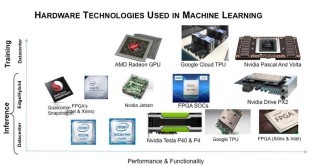Introduction: Artificial Intelligence (AI) has been a transformative force, aiming to enhance computers and robots with capabilities surpassing human intelligence. Tasks such as learning, reasoning, decision-making, creativity, knowledge extraction, and data prediction have been the focal points of AI development. Within the vast field of AI, machine learning (ML) has …
Read More »Transforming Power Transmission with Alternating Direct Current (ADC) and AI
Introduction: In the dynamic landscape of energy technology, Alternating Direct Current (ADC) has emerged as a transformative force, promising lossless power transmission. This article explores the synergy between ADC and artificial intelligence (AI), unraveling how this innovative approach is reshaping the future of clean and efficient electricity distribution. The Challenges …
Read More »Unveiling the Future: Holograhy moving to Real-Time 3D Holograms on Your Smartphone
Introduction: The marvel of 3D hologram technology has evolved from static, monochromatic images to dynamic, real-time displays that are now making their way onto smartphones. Our eyes, the sophisticated light detectors that capture the essence of the world around us, are now able to perceive and interact with three-dimensional holograms …
Read More »New Breakthrough in Energy Storage – MIT Engineers Create Supercapacitor out of Ancient Materials
In a groundbreaking stride towards sustainable energy solutions, a team of MIT engineers has harnessed the power of ancient materials to create a revolutionary supercapacitor. MIT engineers have developed a groundbreaking supercapacitor using a combination of ancient and abundant materials – cement, water, and carbon black. This innovative device holds …
Read More »Revolutionizing Photonics: The Power of Lithium Niobate Integrated Chips
Introduction: In the ever-evolving landscape of technology, photonics stands as a crucial frontier, powering advancements in communication, computing, and beyond. One material, in particular, has taken center stage in revolutionizing photonics – lithium niobate. As scientists delve into harnessing its potential, the development of lithium niobate integrated chips is emerging …
Read More »Pioneering the Future: Technological Breakthroughs Revolutionizing Age-Related Disease Management
In the relentless pursuit of healthier, longer lives, groundbreaking technologies are emerging as beacons of hope, offering novel approaches to tackle age-related diseases. As the global population ages, the urgency to address conditions such as Alzheimer’s, cardiovascular diseases, and arthritis has sparked a wave of innovation that transcends traditional medical …
Read More »Unlocking Quantum Frontiers: The Role of Quantum Algorithms in Revolutionizing Computing
In the intricate realm of technology, Quantum Technology (QT) emerges as a transformative force, harnessing the unique principles of quantum mechanics to manipulate quantum systems such as atoms, ions, electrons, photons, or molecules. At the core of this quantum revolution lies the quantum bit or qubit, the fundamental unit of …
Read More »Biotechnology Contract Manufacturing: Paving the Future of Advanced Therapeutics
Introduction: In the dynamic landscape of biotechnology, the role of contract manufacturing organizations (CMOs) has become increasingly crucial. In the ever-evolving landscape of biotechnology, contract manufacturing is poised to undergo a transformative evolution. Fueled by rapid advances in genetic engineering, personalized medicine, and pharmaceutical innovation, this industry is set to become …
Read More »Shielding the Mind: DARPA’s Intrinsic Cognitive Security (ICS) Program Fortifies Mixed Reality Systems
In the realm of mixed reality (MR), where the physical and digital worlds seamlessly intertwine, a new frontier of security is emerging. Led by the Defense Advanced Research Projects Agency (DARPA), the Intrinsic Cognitive Security (ICS) program aims to safeguard MR systems from cognitive attacks, a novel form of cyber-intrusion …
Read More »Revolutionizing Warfare with AI: DARPA Invests in Strategic Chaos Engine for Planning, Tactics, Experimentation and Resiliency (SCEPTER)
The U.S. Defense Advanced Research Projects Agency (DARPA) is spearheading a groundbreaking initiative to harness the power of artificial intelligence (AI) in strategic battlefield decision-making. With an investment of millions in research funding, DARPA’s Strategic Chaos Engine for Planning, Tactics, Experimentation and Resiliency (SCEPTER) program aims to develop AI technology …
Read More » International Defense Security & Technology Your trusted Source for News, Research and Analysis
International Defense Security & Technology Your trusted Source for News, Research and Analysis

